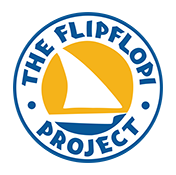The joy of serendipity...
As a movement of people who share a similar vision for our planet, it has been so humbling and rewarding to connect with so many more around the world and the joy of serendipity gives you more hope that with enough of us connected, we can bring about the positive change that we desperately need for planet and people. We are so pleased to announce a new partnership with the Museum for the United Nations - UN Live and find out that Molly Fannon, the CEO of UN Live also has a story to tell about a child and his little boat…Thank you and all aboard the plasticrevolution!
Watching this young inventor and master dhow-builder playing on the shores of Northern Mozambique was a highlight of my time at working at Ilha de Mocambique, a UNESCO World Heritage site, in 2008
In 2008 I was traveling on my way to work at Ilha de Mocambique – a UNESCO World Heritage site in the north of the country. We stopped to break the journey and I came upon a young boy playing by the seaside with a dhow he had built himself from recycled trash. He was splashing in the water as he sailed it and then, hearing the shouting of fishermen returning from a day at sea, he grabbed his toy and stopped to look out at the larger ship and its sailors. I quickly snapped a photo of him in that moment, and that picture has remained one of my most treasured.
On that day – and on many others since – I’ve witnessed first-hand how much pride and love there is in centuries-long traditional dhow building. In the years since, across the maritime communities of Eastern and Southern Africa and the Gulf, I’ve chatted with dhow builders as they hammer cording into their wooden vessels, watched as sailors depart for a day of fishing, listened as elders recount childhoods of pearling, and seen dhows claim center stage in new national museums of the region. It is clear the dhow is an incredible example of how cultural heritage can spark immense pride. Given the connections the dhow made possible across the entire Indian Ocean, it is also an important symbol of just how interconnected we all are.
My time in Eastern Africa and Mozambique in 2008 inspired a huge year for me, personally. I finally took a leap of faith and changed the course of my career on a hunch I had been toying with for years – that culture had a unique – and largely untapped – power to inspire people to think differently about the world, to connect people across geographies, to help us all imagine and then build a more sustainable and hopeful future for us all.
We at the Museum for the United Nations – UN Live – the organization that I have led since 2019 – are thrilled to be partnering with FlipFlopi as this unique dhow embarks on its second voyage. Our institution’s vision is to work with organizations just like FlipFlopi, the world over, to explore how we can invoke the power of culture and creativity to inspire mass action – of everyday people – in support of the Sustainable Development Goals.
FlipFlopi’s work to harness the power of cultural heritage to inspire people, policy makers, and businesses to engage in serious discussion and action on single-use plastic and the environment is a prime example of just how powerful this approach to change can be. And the fact that is has been built upon the entrepreneurial spirit and dhow-building expertise of its local team of leaders is what makes this project even more impactful.
Addressing the problem of plastics in our marine ecosystems is critical for our health, our food security, the biodiversity of our planet. If centuries-old traditions can inspire people to learn more and take action to support modern approaches to addressing climate change and biodiversity loss, then we at UN Live will do everything we can to support the imaginative leaders who are leading the charge. Supported by a coalition of partners including UNEP’s Clean Seas initiative and UN Live, Flipflopi’s new plans to “turn the tide on plastic” the world over and spark a #plasticrevolution is just the kind of urgency and creativity we all need. We are now into the decade of delivery for the SDGs. It can’t be business as usual anymore. We all need to make our mark.
#makeyourmark
Photo: @BorderlandStudios
About the Museum for the United Nations – UN Live
The Museum for the United Nations - UN Live is an independent institution created to connect people everywhere to the work and values of the United Nations, and dramatically increase the number of people who work to achieve its goals.
We are not a conventional museum. We are a new kind of cultural institution – one that aims to use the power of creativity and culture to engage and empower billions of people to take action towards a more sustainable, hopeful world.
In 2020, with Covid-19 illustrating just how intimately we are connected – to each other, and to the health of the natural world – we launched a multi-year programme on action and awareness for biodiversity. Working in partnership across film, art, music, and beyond, this global initiative stands upon our growing belief that by working with and through culture, we can harness the passions and interests of people where they live to drive change.



